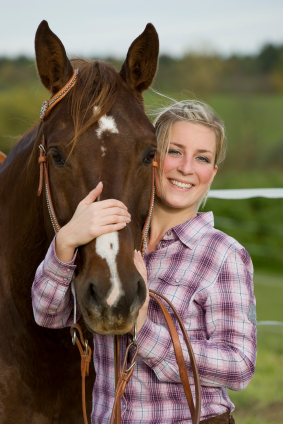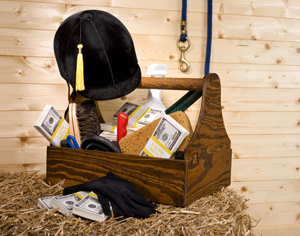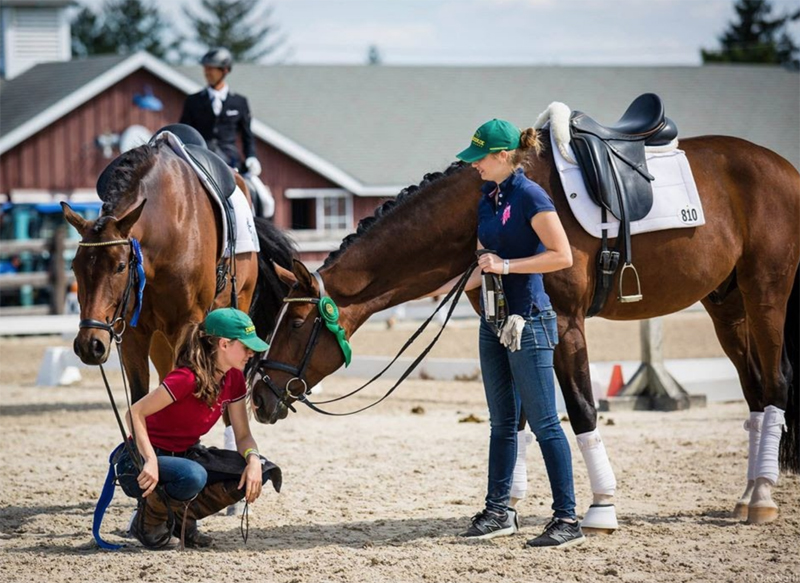Getting an equestrian scholarship can be challenging. It requires dedication, skill, and the right connections.
Many aspiring riders wonder if they have what it takes. Equestrian scholarships are competitive. They’re not just about riding well. Academic excellence and community involvement also play a role. Schools look for well-rounded individuals. They want students who will represent them well both in the arena and in the classroom.
Understanding the requirements and preparing early can increase your chances. This post will explore what you need to know and do to secure an equestrian scholarship. Whether you’re a seasoned rider or just starting, there’s valuable information here for everyone. Let’s dive into the details.

Credit: m.facebook.com
Introduction To Equestrian Scholarships
Equestrian scholarships offer unique opportunities for students passionate about horseback riding. These scholarships provide financial support for students aiming to balance academics and their love for equestrian sports. Understanding these scholarships can be the first step toward achieving your dream.
What Are Equestrian Scholarships?
Equestrian scholarships are financial awards given to students involved in equestrian sports. These scholarships recognize talent and dedication in horseback riding. They help students pursue higher education while continuing to train and compete.
Schools and private organizations typically offer these scholarships. They may cover tuition, equipment, or other related expenses. Some scholarships are need-based, while others are merit-based, focusing on skill and achievements.
Importance Of Equestrian Scholarships
Equestrian scholarships hold significant value for aspiring riders. They reduce the financial burden of college education. This support allows students to focus on their studies and equestrian activities.
These scholarships encourage young talent to pursue their passion. They provide opportunities for riders to train with experienced coaches and compete in higher-level events. This experience can be crucial for those looking to build a career in equestrian sports.
Equestrian scholarships also foster a sense of accomplishment. They recognize and reward the hard work and dedication of students. This recognition can boost confidence and inspire further achievements in both academics and sports.
Types Of Equestrian Scholarships
Equestrian scholarships come in various forms. Each type targets different skills and achievements. Understanding these categories can help you find the right scholarship. Let’s explore the main types of equestrian scholarships.
Academic Scholarships
Academic scholarships reward students with strong academic records. These scholarships often require high grades and test scores. Some may also ask for essays or recommendation letters. Schools look for students who excel in both academics and equestrian activities.
Athletic Scholarships
Athletic scholarships focus on riding skills and competition results. These scholarships are for students who show talent in equestrian sports. Schools often scout riders from high-level competitions. To qualify, you need a strong performance record and coach recommendations.
Private Scholarships
Private organizations and clubs offer these scholarships. They may have specific criteria, like financial need or community service. Some private scholarships focus on certain equestrian disciplines. Research local equestrian clubs and foundations for opportunities. Many private scholarships have less competition than school-based ones.
Eligibility Criteria
Getting an equestrian scholarship can be challenging. Many factors are considered in the selection process. Understanding the eligibility criteria is crucial. This section will cover the main requirements.
Academic Requirements
Academic performance plays a significant role in securing a scholarship. Most programs have a minimum GPA requirement. Typically, a GPA of 3.0 or higher is needed. Strong performance in core subjects is also important. Schools may ask for standardized test scores. SAT or ACT scores often matter. Meeting these academic standards is essential for eligibility.
Riding Experience
Riding experience is another key factor. Scholarship programs seek skilled riders. Years of riding experience can make a difference. Participation in competitions is highly valued. Achievements and awards in equestrian events boost your chances. Demonstrating a high level of proficiency is important. Coaches often look for potential and dedication.
Other Criteria
Other criteria may also impact your eligibility. Leadership roles in equestrian clubs are beneficial. Community service and volunteer work are considered. Letters of recommendation can support your application. Personal essays may be required. They help showcase your passion and goals. Financial need can also be a factor. Demonstrating a commitment to the sport is crucial. Strong interpersonal skills and teamwork are valued.

Credit: www.collegescholarships.org
Application Process
Applying for an equestrian scholarship can seem daunting. But, with a clear plan, it’s manageable. This section will guide you through the process. From finding scholarships to meeting key deadlines, you’ll learn every step.
Finding Scholarships
Start by researching scholarships. Use online databases and school resources. Look for scholarships specific to equestrian sports. Visit college websites. They often list available scholarships. Check with equestrian clubs and organizations. They may offer scholarships too.
| Source | Description |
|---|---|
| Online Databases | Websites like Fastweb and Scholarship.com |
| School Resources | Guidance counselors and school websites |
| Equestrian Clubs | Local and national equestrian organizations |
Preparing Application Materials
Gather necessary documents early. Most scholarships require:
- Transcripts
- Letters of recommendation
- A personal statement
- Proof of equestrian achievements
Ensure your personal statement is compelling. Highlight your passion for equestrian sports. Mention any awards or recognitions.
Key Deadlines
Keep track of deadlines. Missing a deadline means no scholarship. Create a calendar. Mark all important dates. Submit applications at least a week before the deadline. This gives you time to fix any issues.
Some scholarships have rolling deadlines. Others have fixed dates. Be aware of both types. Always double-check deadlines on the scholarship’s website.
| Task | Recommended Time |
|---|---|
| Research Scholarships | 6-12 months before college starts |
| Gather Materials | 3-6 months before deadlines |
| Submit Applications | 1-2 weeks before deadlines |
Tips For A Strong Application
Getting an equestrian scholarship can be challenging. Your application must stand out. Here are some tips to make your application strong and memorable.
Crafting A Compelling Essay
Your essay is your voice. It is your chance to tell your story. Focus on your passion for riding. Explain why you deserve the scholarship. Highlight your achievements and goals. Keep your essay clear and engaging. Use simple language but make it powerful.
Building A Strong Riding Resume
A strong riding resume is crucial. List your riding experience. Include competitions and awards. Mention any special training. Use bullet points for clarity:
- Competition Results
- Training Programs
- Riding Skills
Make it easy to read. Keep it concise yet comprehensive. Your resume should reflect your dedication and skills.
Securing Strong Recommendations
Strong recommendations can boost your application. Ask people who know you well. Coaches, trainers, and teachers are good choices. Make sure they highlight your strengths and dedication. Provide them with your resume and essay. This helps them write a tailored recommendation.
Remember, a good recommendation should:
- Be detailed and specific
- Highlight your achievements
- Speak to your character and work ethic
Gathering strong recommendations can make a difference. Ensure they are well-written and sincere.

Credit: practicalhorsemanmag.com
Common Challenges
Obtaining an equestrian scholarship is not an easy feat. Aspiring riders face numerous hurdles. These challenges often test their determination and resilience. This section explores the common obstacles students encounter.
High Competition
The competition for equestrian scholarships is intense. Many talented riders vie for limited spots. This high demand makes it tough to stand out. Riders need exceptional skills and achievements. Consistent performance in competitions is crucial. A well-rounded portfolio can make a difference.
Balancing Academics And Riding
Balancing academics and riding is a major challenge. Equestrian training demands time and energy. Students must juggle schoolwork and practice sessions. Time management skills are essential. Prioritizing tasks helps maintain academic performance. Sacrifices are often necessary to keep up with both commitments.
Financial Barriers
Equestrian sports can be expensive. Training, equipment, and horse care costs add up. Not all families can afford these expenses. Scholarships can ease the financial burden. Yet, the competition for these scholarships is fierce. Financial barriers can limit opportunities for some talented riders.
Here’s a quick overview of the common challenges:
| Challenge | Details |
|---|---|
| High Competition | Many talented riders, limited spots |
| Balancing Academics and Riding | Time management, prioritizing tasks |
| Financial Barriers | High costs of training and equipment |
Success Stories
Gaining an equestrian scholarship can be challenging. Yet, many students achieve this goal each year. Their success stories offer inspiration and useful insights.
Real-life Experiences
Consider the journey of Emma Brown. Emma began riding at age six. She trained hard and joined her high school equestrian team. Emma participated in many competitions. She won several awards. Her dedication paid off when she received a scholarship from a prestigious university.
Another example is John Smith. John faced many challenges. He did not have access to a horse. But, he volunteered at a local stable. This allowed him to gain riding experience. His perseverance and hard work impressed college scouts. John earned a full scholarship.
Lessons Learned
These stories teach valuable lessons. First, dedication and hard work are crucial. Emma and John both trained regularly. They did not give up when faced with difficulties.
Second, networking is important. Emma joined her school team. John volunteered at a stable. Both made connections that helped them get noticed.
Finally, competition experience matters. Emma and John competed in many events. This helped them improve their skills. It also showed their commitment to the sport.
| Key Lessons | Examples |
|---|---|
| Dedication and Hard Work | Emma trained daily, John volunteered at a stable |
| Networking | Emma joined her school team, John made connections at the stable |
| Competition Experience | Both participated in many events |
By learning from these success stories, aspiring riders can increase their chances of earning an equestrian scholarship. Consistent effort, strategic networking, and gaining competition experience are all key to success.
Frequently Asked Questions
What Is An Equestrian Scholarship?
An equestrian scholarship is financial aid for students excelling in horseback riding. It helps cover tuition and other educational expenses.
How Competitive Are Equestrian Scholarships?
Equestrian scholarships are highly competitive due to limited availability. Strong riding skills and academic performance increase your chances.
What Skills Are Needed For An Equestrian Scholarship?
Candidates need exceptional riding skills, good academic records, and often competitive experience. Leadership and teamwork are also valued.
Are Equestrian Scholarships Available For All Disciplines?
Yes, equestrian scholarships are available for various disciplines like show jumping, dressage, and eventing. Research specific schools and programs.
Conclusion
Securing an equestrian scholarship can be challenging, but it’s worth the effort. Focus on improving your riding skills. Maintain strong academic records. Participate in competitions to gain experience. Build a strong application with letters of recommendation. Research various scholarships and their requirements.
Every bit of effort counts. Persistence and dedication pay off. Keep pushing towards your dream. Your hard work will eventually open doors. Stay positive and committed. Success takes time and perseverance.



